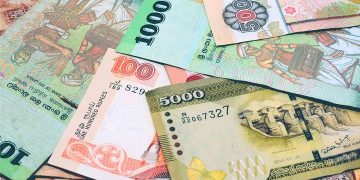By P.K.Balachandran/Daily Express
Colombo, May 29: India’s swift delivery of relief supplies and personnel to flood and landslide-hit Sri Lanka has re-affirmed its position as Sri Lanka’s most relevant neighbor, and also its primacy as a power in the South Asian region.
No other country in the region, Pakistan and China included, can act with such speed, and deliver men and material in such high volumes at short notice when natural or man-made disasters strike Sri Lanka. Pakistan is yet to respond materially and China announced late on Sunday ,that it will send US$ 2.2 million worth of relief goods.
Pakistan, India’s rival in Sri Lanka and the South Asian region, woke up to the need to respond to Sri Lanka’s global call for help, a tad too late. Awakened by the media blitz on the arrival of the Indian naval vessel INS Kirch with relief material and workers, the Acting Pakistan High Commissioner, Dr.Sarfraz Ahmd Khan Sipra, issued a press release in the afternoon saying that Pakistan is discussing with the Sri Lankan authorities the kind of relief they want, and these will be delivered soon. He made it a point to recall that only recently, when Sri Lanka was facing a drought, Pakistan sent 10,000 mt of rice.
But Pakistan’s response paled into insignificance in the light of what the Indian Prime Minister Narendra Modi and India’s new High Commissioner in Sri Lanka, Taranjit Singh Sandhu, did within 24 hours of Sri Lanka’s global appeal. More than a 100 had died and over 200,000 had been displaced in 14 districts in the floods and landslides caused by a particularly virulent South West Monsoon. .
INS Kirsh a corvette laden with relief material and relief workers, docked at Colombo harbor early in the morning on Saturday to be received by none other than the new Foreign Minister of Sri Lanka, Ravi Karunanyake. INS Shardul ,a tank carrier with more relief material on board, docked on Sunday; and INS Jalashwa, a landing craft and the biggest of the three vessels, is expected on Monday. The India team will have helicopters besides inflatable boats.
Recounting the sequence of events, High Commissioner Sandhu said that following a request for help from the Sri Lankan government on May 26, the Indian Prime Minister, Narendra Modi (who was in Guwahati in Eastern India on tour) was contacted. The Prime Minister immediately directed the Indian navy to rush aid to the disaster struck neighbor.

“In less than 24 hours, relief materials were assembled, the vessel INS Kirch was diverted from its deployment, loaded with the assembled material, and bought to Colombo,” Sandhu said underlining the swiftness of India’s response.
The envoy said that India’s speedy response stemmed from good neighborliness a “a value grounded in Indian and Sri Lankan cultures,” as he put it.
“In the traditions of India and Sri Lanka, when one is in trouble, it is the neighbors and relations who rush to his help. India’s response is in line with that tradition,” Sandhu explained.
The envoy pointed out that India has always been the first to respond to Sri Lanka’s call for help in facing natural disasters.
“When tsunami struck Sri Lanka in December 2004, India was the first to arrive with medical and other relief material. Indian naval doctors even set up a clinic in Galle,” he recalled.
Asked if he could indicate the quantum of aid that India plans to give, the High Commissioner said that it would be too early to give precise figures.
“All we can say now is that it will depend entirely on what the Sri Lankan authorities request for. But we can assure you that we will provide all the assistance that Sri Lanka seeks,” he said.
The envoy said that the deployed Indian naval personnel will work in close cooperation with the Sri Lankan authorities and the Sri Lankan navy.
“And once the task is done, they’ll quit,” he added, to assure Sri Lankans that the Indian armed forces personnel have come only to help the Sri Lankan government face a difficult situation, and when help is no longer required, they will leave.
INS Kirch, with around 125 personnel on board, offloaded supplies, including inflatable Gemini boats with diving teams, and a mobile medical team with supplies. The second ship, INS Shardul, a tank landing ship, is carrying additional relief material including more inflatable boats.
The third ship, INS Jalashwa, an amphibious transport dock, carries larger amounts of relief material .It is ideally suited for conducting Humanitarian Assistance or Disaster Relief Missions.
Immediately on arrival, the Indian naval medical teams fanned out into the disaster hit areas. In Kalutara, they set up medical clinics while relief workers distributed supplies like drinking water and food. The work was being done in collaboration with the Sri Lankan navy and local authorities.
(Sri Lankan Foreign Minister Ravi Karunanayake and Indian High Commissioner Taranjit Singh Sandhu speaking to the media after the arrival of INS Shardul on Sunday)



























































